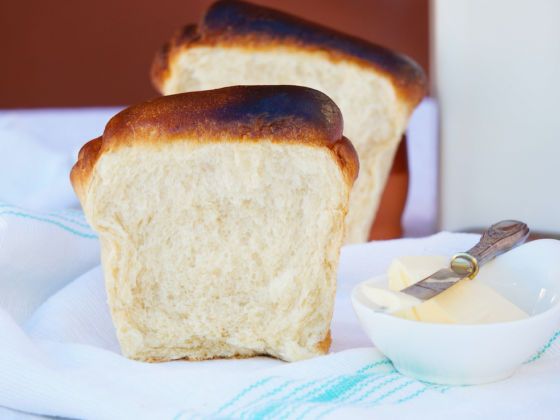The short-lived era of the whipped dalgona coffee craze has officially ended. Social media has moved to a new viral cooking trend: cloud bread. This fluffy confection is closer to cotton candy than it is to a starchy loaf, but it might have its roots in the many styles of East Asian bread, popular from Japan to Korea, which are defined by their cloud-like texture.


TikTok Loves ‘Cloud Bread,’ but Japanese Shokupan Is the Better Fluffy Sweet Bread
Cloud bread found viral fame on the TikTok account of Abigail Hwang-Nable, @abimhn, where it racked up nearly 20 million views. Hwang-Nable’s recipe doesn’t include any of the traditional bread ingredients like yeast or flour. Instead, it involves simply briskly whisking together egg whites, corn starch, and sugar, making it closer to a baked meringue dessert than a bread that could support butter, jam, or a runny egg.
@abimhn cloud bread!!! dope recipe from @linqanaaa ##cloudbread ##MyBFF ##foryou ##fyp ##bakingrecipe ##homemade ##homechef ##clouds ##avatar ##cake ##meringue
However, cloud bread does bear a close resemblance to many East Asian bread styles, including Japanese shokupan, also known as Hokkaido milk bread. Shokupan is famous for its super light, pillowy texture. Another characteristic that cloud bread borrows from shokupan is that it’s lightly sweetened with sugar. Hwang-Nable (who features many other East Asian inspired dishes on her TikTok channel, including boba, ram-don, and mochi) also adds a dash of food coloring to the mixture to give her cloud bread a kawaii twist — the Japanese aesthetic of cuteness.
The secret ingredient to Shokupan is a roux called tangzhong, which locks in moisture and keeps bread soft and dense as opposed to the rigid sourdough that you might find in America. Also known as water roux, tangzhong is a paste made from either water or milk and mixed with flour. The paste is then cooked, which allows the gluten strands in the flour to become more elastic. The tangzhong has an almost gelatinous texture, which when added to the rest of the ingredients, allows the bread to retain moisture rather than drying out during the cooking process. The result is a chewy, not crunchy bread, that has a delicate, almost melt-in-your-mouth texture. The smooth surface also differentiates itself from many American sourdoughs.
Cloud bread might take some of its inspiration from shokupan, but it’s certainly not as practical as the Japanese bread, which is soft but also sturdy enough to hold up under the demands of a sandwich. Cloud bread seems like more a novelty dessert that drew so much attention because of its almost foam-like appearance. But it comes down to it, cloud bread is simply whipped, sweetened egg whites.
Asian-inspired snacks with adorable designs tend to perform well on social media, perhaps because the ingredients seem novel to a Western audience or because the aesthetics are so satisfying — just check out these beautiful shaved ice desserts or Taiyaki ice cream for a taste of the hype surrounding Asian treats. When the latest iteration goes viral on a platform like TikTok, there’s usually very little context included for the original recipe or its inspiration. Often these suddenly viral creations aren’t new, and their origins sometimes are obscured or entirely overlooked in the rush to jump on the viral bandwagon. When these TikTok and Instagram cooking trends pop up, it’s important to consider who gets credit for creating food trends — or if we’re simply appropriating a more palpable version of a dish that’s been around in a non-Western culture longer than social media.